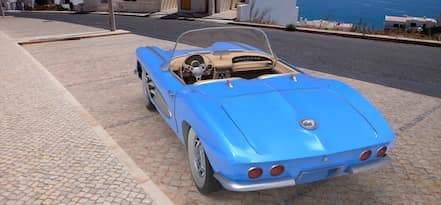History of Supercars
The 1950s
While the term ‘supercar’ may have been used in the 1920s, it wasn’t until the mid-1950s that sports cars with outstanding performance really entered the marketplace. Early pioneers for the supercar segment included the 1954 Mercedes 300SL and Ferrari’s 250 series sports racers.
The 1960s
In the mid-1960s supercars as we think of them today began to release. Some significant developments in the 60s include the creation of the Ford GT and the release of the mid-engined Lamborghini Miura, which was designed from the start as a road car. The Ford GT became a staple of the supercar and American muscle car scene, proving performance and exquisite design can go hand-in-hand.

The 1970s
A fuel crisis in the early 70s almost ended the supercar, but they managed to survive and grow from here. The first mass-market turbo road cars, including the likes of the Porsche 911 Turbo, were released. The 911 Turbo stood out with its eccentric design elements and stellar performance. With the birth of the 911 Turbo, Porsche cemented themselves in the supercar scene, and have remained there to this day.
Arguably the most important supercar of this generation was the Lamborghini Countach. This mid-engine model had a striking design that stood out among the pack. Its V12 engine was longitudinally-mounted with slight modifications to the Miura’s engine placement. The end result had the engine sandwiched between the rear differential and mid-mounted transmission. The Countach remains a favorite among supercar fanatics and gearheads around the world, and rightfully so.
The 2000s
During the 2000s, the approach to creating supercars split with some companies opting to create lightweight vehicles while others like Ferrari and Porsche opted to increase vehicle power. New additions to the supercar family included the first performance SUV, the Porsche Cayenne Turbo S, and the world’s first electric sports car, the Venturi Fetish. Even to this day, we still see a divide between power and vehicle weight, though some modern supercars are blending both together to create mind-blowing vehicles. Much like the ‘90s, the 2000s produced a long line of notable supercars. Standout models from 2000s include:
- Porsche Carrera GT
- Pagani Zonda
- Lamborghini Murcielago
- Koenigsegg CCX
- Ferrari Enzo
- Mercedes-Benz SLR McLaren
- Noble M12
- Lexus LFA
- Gumpert Apollo
- Audi R8
- Bugatti Veyron
- Ford GT
- Nissan GT-R
- Lamborghini Gallardo Superleggera
- Tesla Roadster
The 2010s
While there are still plenty of traditional supercars on the market, there have been more advancements and releases of supercars with hybrid or fully electric engines. Brands are utilizing more aerodynamic and lightweight designs for even better track times and Aston Martin and Mercedes-Benz introduced their F1 inspired race cars for the road. This new brand of supercars were part of the evolving branch into hypercars. Pinnacle models like the Ferrari LaFerrari, Porsche 918 Spyder, and McLaren P1 paved the way for supercars to come. The 2010s saw a good amount of supercars as well, including models such as:
- Noble M600
- Lamborghini Sesto Elemento
- Lamborghini Aventador
- Pagani Huayra
- Koenigsegg Agera R
- Lamborghini Veneno
- McLaren MP4-12C
- Bugatti Veyron SuperSport
Become a Part of History at Marshall Goldman Motor Sales
Experience the thrill of driving a world-class supercar through the streets of Miami with Marshall Goldman Motor Sales. No matter if you are interested in a vintage model, or something more modern, we can help you find it in our inventory of collectible cars. Contact us at Marshall Goldman Motor Sales to learn about getting behind the wheel of history at Marshall Goldman Motor Sales.
